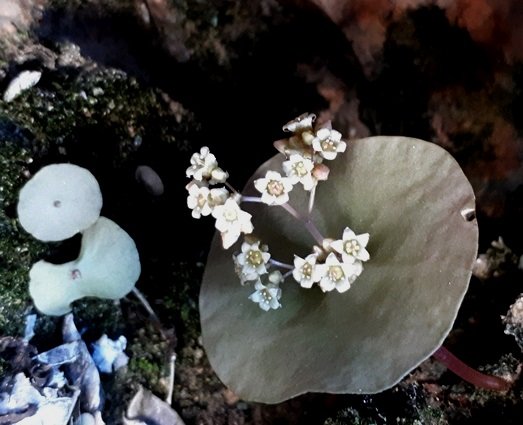Crassula umbella, a versatile species

In this form of Crassula umbella one nearly round, flat leaf is positioned horizontally below the inflorescence on a soft, fleshy stem. The variable plant may also produce two kidney-shaped leaves opposite each other.
C. umbella comprises a solitary stem from a small, underground tuber. The flowers at the top grow in a thyrse-shaped cluster. A thyrse is a branched inflorescence in which the main axis is a raceme and the secondary (and later) axes are cymes.
The five, white petal lobes of each flower are triangular, recurving around the corolla cup. Five white anthers surround the stigma, visible at the brim of the cup. The flowers may angle up, outwards or nod. Some of these plants have flowers bearing petal lobes longer and narrower than seen here, variously recurved. The sepal tips sometimes peep out in the gaps between the corolla lobes.
This plant was found in the shade of large rocks next to a stream at Naries, Namaqualand during August (Frandsen, 2017; Le Roux, et al, 2005; iNaturalist).

